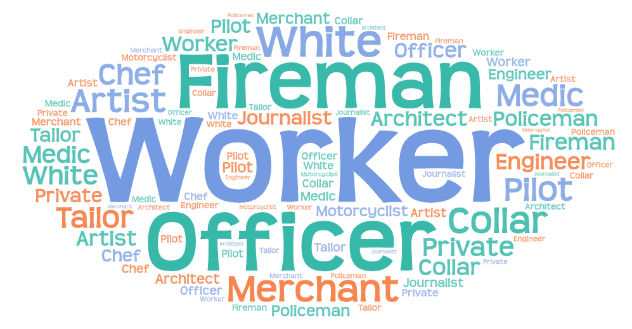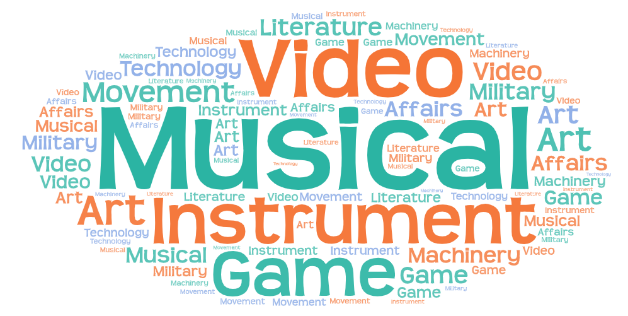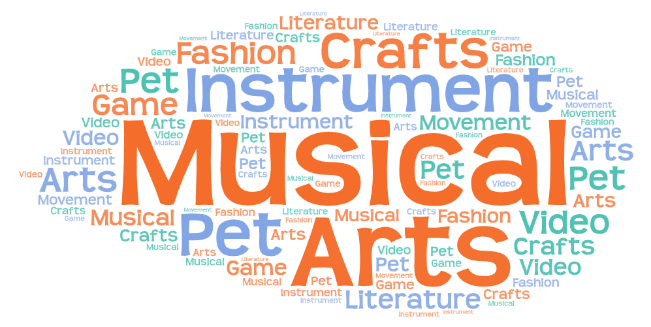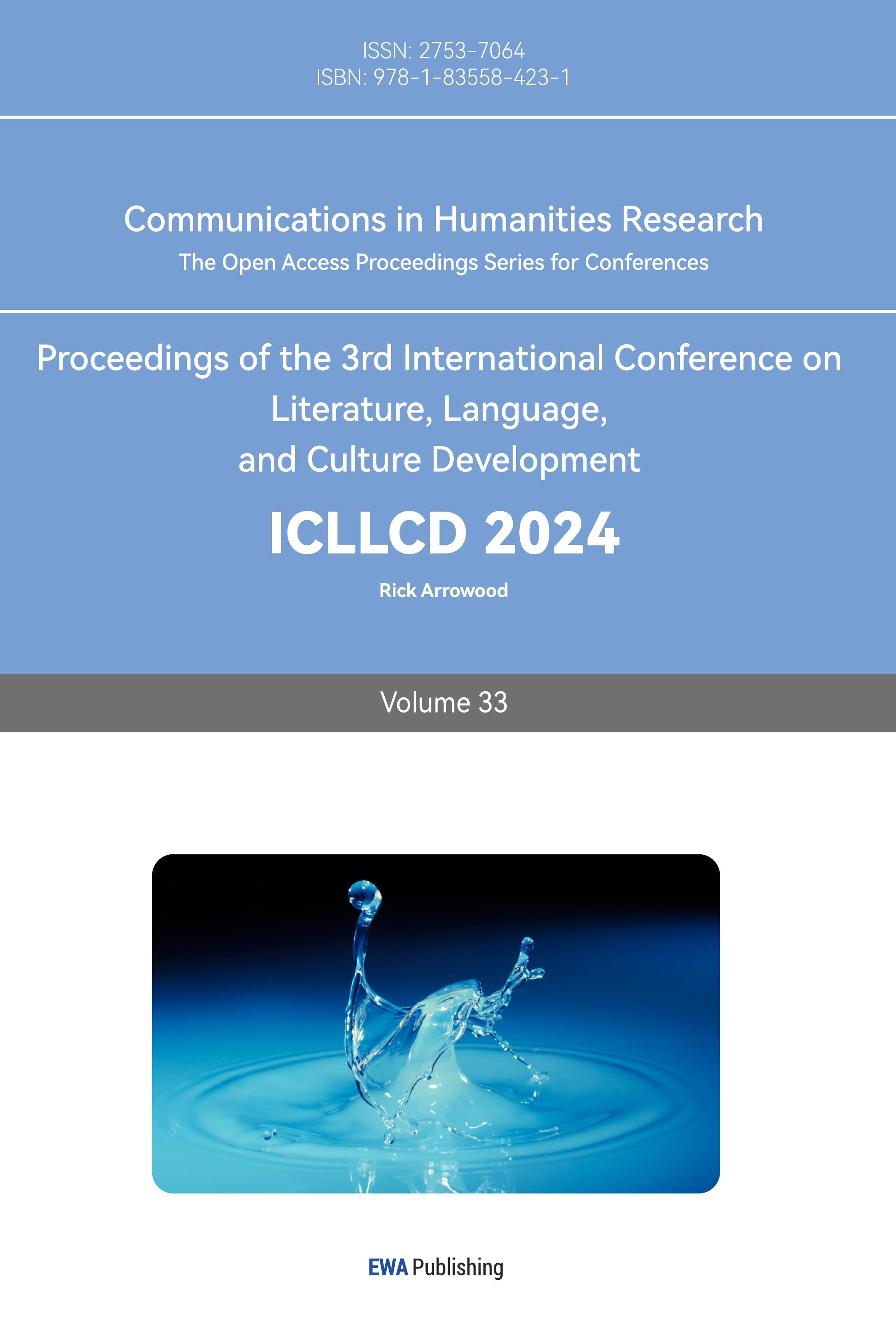1. Introduction
With the continuous development of AI technology, Artificial Intelligence Generated Content (AIGC) has permeated various industries, bringing unprecedented changes to the field of art. AI drawing, as a novel form of art, has garnered attention for its high creativity and autonomy. Currently, AI drawing has made significant progress, with various AI drawing software emerging rapidly, such as "Open AI," "Midjourney," and "Pisco." Some AI drawing software can generate high-quality images by learning from extensive image data and textual descriptions. By inputting text into AI drawing software, users can generate images that align with the descriptions, providing new possibilities for artistic creation.
However, the binary gender concepts present in AI drawing have sparked discussions and controversies among users. These gender concepts manifest as inherent stereotypes and societal biases in the gender expression and portrayal within AI-generated images. Butler argues that physiological gender and social gender do not correspond one-to-one; social gender should possess fluidity [1]. Simple binary gender constructions further solidify gender stereotypes and reinforce gender opposition. The images generated by models are built upon the extraction of open-source datasets, and behind AI technology permeates society's gender stereotypes, expectations of gender roles, and social structures. These factors influence the understanding and expression of gender in AI drawing models. This paper explores whether AI drawing possesses gender fluidity that challenges traditional binary gender concepts through the analysis of gender narratives in AI-generated images. The aim is to investigate and reveal the reflection and transmission mechanisms of societal gender concepts in the application of AI technology, creating a space for artistic creation driven by AI technology. This space enables individuals to explore and express their gender in ways not restricted by societal norms, fostering reflection and discussion on gender equality and diversity.
2. Research Questions and Objectives
The "Text-to-image" feature in AI drawing software is a novel form of interaction that involves converting text into images. This feature, based on deep learning and generative adversarial network (GAN) technology, generates images that match textual descriptions by learning the relationship between text and images. This process involves converting semantic information from the text into a visual expression of the image by dissecting descriptive discourse into multi-dimensional keywords. These keywords can be derived from various aspects such as the image itself, its narrative, or professional terms encompassing artistic style, composition, color palette, and perspective techniques.
To examine the visual expression of gender identities in AI drawing, it is essential to understand the image generation mechanism and analyze the narrative strategies of text-to-image mechanisms. By generating images based on these strategies, the resulting images can be analyzed for gender expression to investigate the degree of gender fluidity in AI drawing. The following specific research questions are posed: 1. Investigate existing research on constructing narrative approaches for text-to-image from a gender perspective. 2. Analyze the gender symbol representation of them in AI-generated images based on text and assess the level of gender fluidity in AI drawing. Specifically, if AI-generated images can exhibit various gender expressions for different gender keywords, we can consider the AI drawing to have a higher level of gender fluidity. This is because it is not restricted by traditional gender role expectations, showcasing more diverse and rich gender expressions. 3. Utilize narrative strategies in text-to-image to further enhance the gender fluidity of AI drawing and eliminate gender biases.
3. Literature Review
3.1. Prompt: The Narrative Language of Text-to-Image
As Roland Barthes stated, "For humans, it seems that any material is suitable for narration." After the emergence of text, images, together with text, become the most basic and essential tools or means of narration. When examining symbolic narratives in narrative paintings, Long Diyong categorizes images into two types: narrative and non-narrative. "Narrative paintings are a special kind of narrative image, with the narrative object not being events that have actually occurred in real life but rather 'stories' existing in other texts. It is an imitation of the text" [2]. From this perspective, AI-generated images based on text can be seen as a form of "narrative painting" created by artificial intelligence, with the narrative object derived from the input text model, referred to as the "prompt."
In the process of text-to-image, to accurately generate the content expressed in the text, precise wording must be selected to instruct the system to produce the desired image. Different keywords must also be added to control the style and quality of image generation, allowing the image to precisely match the text in the form of keywords. The prompt "uses carefully chosen and combined sentences to achieve a certain visual style in the synthesized image," resembling the narrative language of text-to-image systems [3]. Through continuous experimentation and improvement by users of AI drawing, a set of fixed prompt templates has been developed.[4][5][6][7].In summary, apart from the style and type of the image, subject is an essential component in generating an AI drawing, defining "what" (the object or focus). In the context of the gender narrative study in this paper, subject is determined as male/female, with gender features as modifiers to create prompts. This approach explores the visual presentation features and symbolic expressions of gender in AI images, aiming to assess the degree of gender fluidity.
3.2. Gender Narratives
The term "gender" has always encompassed two meanings: biological sex (sex) and social gender (gender). In 1968, American psychologist Stoller first made a distinction between biological sex and social gender [8]. In 1976, Gayle Rubin formally proposed the professional term "gender" and argued that "sex/gender system is a set of organizations that transform biological sexuality into the product of human activity" [9], which is based on the social organization structure of gender separation. It is as important as the construction of economic organization structure and political system of human society. Therefore, gender is a social construct rather than an essential existence, and its significance is that it becomes an analytical tool and framework for interpreting the social construction of gender temperament.
Since gender traits are not innate, but are shaped in certain social institutions, social norms and power relations, then discourse, as a way of empowerment, also participates in the construction of gender traits in the process of responsible for gender narrative. Just as postmodern narrative theorist Marie Currie argues that the construction of the self-subject identity is narrated in discourse [10]. Althusser further points out that literary narration is one of the most crucial and extraordinary forms of human discourse expression, playing a constructive role in shaping the subject. In this sense, literary narratives, as the foundation for the construction of self-subject identity, also construct gender. Therefore, prompts, as textual narratives, can achieve gender expression narratives, generating corresponding AI images to analyze the gender fluidity in gender image narratives.
4. Research Methods
Gender expression refers to the external manifestation of an individual's gender identity on the material level (such as clothing, makeup, hairstyle, etc.) and behaviors that reflect an individual's social gender. In this study, the representative tool for AI drawing, "Midjourney," is used to create gender expression narratives—prompts—to generate research images. Subsequently, the generated AI drawing images are classified, compared, and statistically analyzed to explore the performance of different works in terms of gender fluidity, quantifying the degree of gender fluidity.
To comprehensively and deeply investigate the impact of gender narratives on gender fluidity, qualitative research methods are also employed. This involves analyzing visual symbols and combining relevant theoretical knowledge of image narratives to discuss the gender fluidity reflected in AI images. In terms of sample size, 100 AI images are generated for each prompt group, allowing for a comparison of gender presentation methods and features within each group.
5. Feature presentation and role distribution of both sexes in AI images
Male qualities refer to a set of traits, behaviors, and roles typically associated with males, encompassing both physiological and social determinants. Sociologist R.W. Connell, in "Masculinities," argues that male qualities are a contentious term, not fixed personality types but subject to change with social environments [11]. Traditionally, male qualities include courage, independence, confidence, strength, and leadership [12][13], while traits such as meekness, kindness, sensitivity, quietness, beauty, and lovability are regarded as female qualities [12][14][15]. In the initial testing phase, prompts were created for qualities like "brave person" and "confident person," representing male qualities, as well as "meek person," "kind person," and "sensitive person," representing female qualities, to generate corresponding AI images. The results are as follows:
Table 1: Statistics on the number of gender characters in AI images.
Narrative Content | Male Only | Female Only | Co-occurrence | Undetermined Gender | Total | Male Image Percentage | Female Image Percentage |
Brave Person | 74 | 11 | 2 | 13 | 100 | 76% | 13% |
Confident Person | 64 | 33 | 1 | 2 | 100 | 65% | 34% |
Independent Person | 52 | 31 | 0 | 19 | 102 | 51% | 29.4% |
Strong Person | 58 | 37 | 0 | 5 | 100 | 58% | 37% |
Person with Leadership | 86 | 13 | 0 | 1 | 100 | 86% | 13% |
Meek Person | 32 | 40 | 0 | 28 | 100 | 32% | 40% |
Kind Person | 27 | 42 | 11 | 21 | 101 | 37.6% | 52.5% |
Sensitive Person | 2 | 87 | 3 | 8 | 100 | 5% | 90% |
Quiet Person | 2 | 91 | 0 | 8 | 101 | 2% | 90% |
Figure 1: The proportion of gender temperament in AI images.
The results above(Figure 1) reveal that the presentation of gender traits in AI images retains society's stereotypical impressions of gender qualities. Male qualities are not inherent traits of males from birth but are cultivated by society to be masculine. Cornell distinguishes between male and female qualities based on power relations, production relations, and emotional attachment. He believes that the most prominent feature of male qualities lies in their dominant position in specific gender relations, which is advantageous for maintaining male dominance in patriarchal society and possession in production relations. Similarly, traditional female qualities subordinate women to men, but Beauvoir believes that female qualities are variable and can be constructed as changeable concepts [11]. Unfortunately, in AI art, at least in "Midjourney," the variability of gender qualities is not reflected.
The choice and distribution of occupations between men and women can also be considered as an expression of gender. In many societies, specific occupations are associated with distinct social expectations and stereotypes related to gender. This has led to different gender tendencies and preferences in occupations, reflecting societal expectations for gender roles and traits in men and women's professional lives. For instance, it is generally believed that men are more suitable for careers such as engineers, technicians, and police officers, while nursing, education, and domestic services are considered more fitting for women. This division of labor based on gender is often referred to as "gender occupational differentiation," and this simplistic binary division is also evident in the gender expression of AI images in "Midjourney." During testing, descriptive texts such as "men/women of different occupations" were created, and a statistical analysis was conducted on the reflected occupational characteristics in the generated images, resulting in the formation of a "word cloud." The results revealed that male occupational roles (Figure 2) were mainly associated with "workers," "officers," "firefighters," "police," and "businessmen," while female occupational roles (Figure 3) were predominantly associated with "workers," "white-collar workers," "domestic services," "nurses," and "teachers."


Figure 2: male occupations Figure 3: female occupations
Individual interests and hobbies can also, to some extent, reflect gender expression. In different cultures and societies, there are common interests and activities associated with either males or females as perceived by society. Under the prompt "man/woman with hobbies," male interests and hobbies (Figure 4) are often defined as "instruments," "video games," "technology and mechanics," and "sports," while female interests and hobbies (Figure 5) are concentrated in "instruments," "pets," "fashion," "fine arts and crafts," and "literature."
The results above indicate the existence of stereotypical impressions regarding occupations and interests in AI drawing tools. This may reflect societal stereotypes and biases present in the creators, training data, or algorithms. Such stereotypes may introduce biases in terms of gender, occupations, interests, etc., leading to a lack of diversity and equality in the elements expressed in the generated artworks.


Figure 4: male interests and hobbies Figure 5: female interests and hobbies
6. Visual Images and Narrative Representations of Gender in AI Artwork
In addition to quantitatively analyzing the gender expressions in AI images, this study delves deeper into the diverse manifestations of gender narratives in AI drawing tools. For this purpose, partial AI-generated images underwent textual analysis, with a specific focus on the construction of visual elements related to the male and female bodies and their symbolic representations. The study aimed to dissect gender fluidity in the AI drawing tool "Midjourney" by examining visual elements such as posture, actions, and clothing to portray gender images.
6.1. Naked Bodies Projected in Gaze
The prominence of women's bodies and attire as indispensable visual focal points can be traced back to Hollywood films in the United States. Laura Mulvey, in her essay "Visual Pleasure and Narrative Cinema," deconstructed the mechanism of "visual pleasure" in classic Hollywood films, pointing out the existing unequal relations regarding "sex" in society, resulting in an active/male and passive/female dichotomy in the act of "seeing." In films, men take on a dominant role, while women are positioned as the ones being observed, the objects on display [16]. Similarly, in AI drawing tools represented by "Midjourney," the presentation of gender images also carries a distinct male gaze.
Under the descriptions of the prompts "powerful man" and "powerful woman," AI images generated exhibit a gender bias shaped by the male perspective, despite having the same gender traits. In the presentation of body forms, male images typically emphasize "authority" and "strength" through external features such as ties and suits. In contrast, female images tend to highlight specific body parts through revealing clothing. This design trend not only visually emphasizes the sensual appeal of female images but is also rooted in the aesthetic desires of the male audience and the subjective shaping of individual fantasies, meeting various subconscious needs for female fantasies among men.
6.2. Perpetuating the "Masculine" in Social Constructs
In AI-generated images, male figures often display a tall and upright posture, dressed in tidy and neat attire. Their appearance is commonly characterized by a robust and imposing physique, emphasizing distinctive male features. Regardless of the designated gender traits, AI-generated male images visually align with the societal gender constructs, rarely exhibiting feminine or neutral characteristics. Taking the prompts "Enterprising men" and "tender men" as examples, the AI-generated male figures tend to wear shirts or suits, with strong and well-defined facial contours, presenting a tall and upright overall image. This expression emphasizes the masculine beauty of male figures, reflecting societal expectations and constructs regarding the male image.
This mode of expression accentuates the rugged beauty of male figures, fully reflecting societal expectations and constructions of the male image. As Gombrich argued in "Art and Illusion," the process of representing reality involves the complex interplay of programs and conditions, and different styles emphasize different compensatory actions. [17] In AI images, the taut facial expressions, the lowered chin, and the tightly closed mouth, in addition to basic patterns in constructing the figure's posture, match and compensate for the male image, completing a unified discourse on the male body.
6.3. Encased Representations beneath Clothing
Psychoanalyst John Carl Flügel proposed in "The Psychology of Clothes" that the differences in attire between genders serve as a defense mechanism against attracting same-sex social interactions. Additionally, clothing design intentionally distinguishes between the traits of men and women, emphasizing masculinity and femininity. Skirts are more expressive of female qualities, and a variety of colors can showcase the distinctiveness of women. On the other hand, men's attire should be as simple as possible, with colors not overly vibrant [18]. Such thoughts and aesthetic perspectives are also reflected in AI painting tools, where clothing becomes a symbol of gender. The expression of power and strength in men is often symbolized by suits and ties, while dresses become symbols representing women. Even in scenarios created, such as "A woman playing basketball", AI images of female figures often feature many wearing skirts and jumpsuits. Through the flowing skirts and long hair, a dynamic and delicate feminine quality is highlighted, softening the perception of strength exhibited by women in sports. This suggests that AI painting software may tend to emphasize traditional feminine aesthetic features when depicting female sports scenes, thereby diminishing the portrayal of strength and athleticism. This could reflect the gender stereotypes present in AI model training data or design, resulting in generated images that align more with traditional and socially expected female images rather than the diverse and authentic representations of women in sports scenes.
7. Conclusion
Based on the narrative analysis of AI-generated images, this study finds a low degree of gender fluidity in AI painting tools, characterized by evident gender biases and stereotypes. This conclusion is drawn from the following observations and analyses.
Firstly, the gender roles portrayed in the images often solidify within traditional gender frameworks, lacking diversity and innovative gender expressions. For instance, male figures are frequently associated with features such as strength and leadership, while female figures are linked to traits like softness and emotion. This rigid portrayal of gender roles indicates that AI painting tools not only lack diversity and reflection in gender narratives but also reinforce the binary nature of gender through seemingly neutral AI images. The impact of this goes beyond exacerbating gender opposition; it limits the space for individual expression and development. For those who do not conform to traditional gender expectations, it may lead to identity confusion, especially when faced with models of gender roles fixed according to biological gender.
More significantly, the celebration of male values has a dark counterpart in the fear and anxiety induced by female characteristics. "The identification of male sexuality is established by making women the object of sexuality" [19]. Men construct a bond among themselves in a same-sex social subject by regarding men lacking masculine traits and women as sexual objects. Once reproductive, sexual, and social characteristics are solidified as masculine traits, men are endowed with the ability to engage in struggles or violence. As French sociologist Pierre Bourdieu suggests, the construction of gender traits is oppressive for both men and women.
Secondly, AI painting tools position women as aesthetic objects or subordinates, expressing visual cultural characteristics dominated by men. In AI images, women's professions, qualities, appearance, and physique largely conform to societal gender stereotypes and male aesthetic norms. This unidirectional visual aesthetic conditioning validates Catherine Hakim's concept of "erotic capital," where women use their appearance and physique as bargaining chips to attract a large male audience for economic, cultural, and other gains. The emergence of these singular female images signifies that AI painting tools are infused with mainstream gender ideologies. Under the logic of externalizing appearances, women cease to be individuals and devolve into symbols. The acknowledged basic value women possess in society becomes the potential to be observed, used, and possessed.
This finding highlights the limitations of AI painting tools in gender expression, necessitating further improvements and reconstructions in technology and data sampling. To achieve more diverse, inclusive, and innovative gender narratives, innovative methods and strategies are needed to promote gender fluidity, break traditional gender frameworks, and present gender expression in a more diverse and equitable manner. This will provide broader space and opportunities for gender equality and societal progress.
References
[1]. Butler, Judith. (2009). Gender Trouble:Feminism and the Subversion of Identity. Shanghai Sanlian Bookstore.
[2]. Long, D. (2008). Image narration and text narration: Image and text in story painting. Social Sciences of Jiangxi (3), 16, p. 28-43.
[3]. Rombach, R., Blattmann, A., & Ommer, B. (2022). Text-Guided Synthesis of Artistic Images with Retrieval-Augmented Diffusion Models.
[4]. Brade, S., Wang, B., Sousa, M., Oore, S., & Grossman, T. (2023). Promptify: Text-to-Image Generation through Interactive Prompt Exploration with Large Language Models.
[5]. Dehouche, N., & Dehouche, K. (2023). What is in a Text-to-Image Prompt: The Potential of Stable Diffusion in Visual Arts Education.
[6]. Xie, Y., Pan, Z., Ma, J., Luo, J., & Mei, Q. (2023). A Prompt Log Analysis of Text-to-Image Generation Systems.
[7]. Oppenlaender, J. (2022). A Taxonomy of Prompt Modifiers for Text-To-Image Generation,1-14.
[8]. Stoller, RobertJ. (1994). Sex and Gender: The Development of Masculinity and Femininity.
[9]. Rubin, G. (2007). Thinking sex: notes for a radical theory of the politics of sexuality. In Culture, Society and Sexuality (pp. 166–203). https://doi.org/10.4324/9780203966105-21
[10]. Thomas, R. M. (2001). Recent theories of human development. https://doi.org/10.4135/9781452233673
[11]. Ji Caixue.(2022). The Construction of Masculinity and Femininity in the "Nigeria Trilogy" Master's thesis, Hebei University of Science and Technology.
[12]. Vetterling-Braggin, M. (1982). “Femininity,” “masculinity,” and “androgyny” : a modern philosophical discussion. Rowman and Littlefield eBooks,Rowman and Littlefield eBooks.
[13]. Bosson, J. K., & Vandello, J. A. (2011). Precarious Manhood and Its Links to Action and Aggression. Current Directions in Psychological Science, 82–86. https://doi.org/10.1177/0963721411402669
[14]. Thomas, R. M. (2001). Recent theories of human development, p.248.https://doi.org/10.4135/9781452233673
[15]. Kalat, J. W. (2016). Introduction to Psychology. Cengage Learning, 184.
[16]. Mulvey, L. (1975b). Visual pleasure and narrative cinema. Screen, 16(3), 6–18. https://doi.org/10.1093/screen/16.3.6
[17]. Blinder, D., & Gombrich, E. H. (1983). The Image and the Eye: Further studies in the Psychology of Pictorial Representation. The Journal of Aesthetics and Art Criticism, 42(1), 85. https://doi.org/10.2307/429951.
[18]. Flügel, J. C. (1930). The psychology of clothes, 135, https://ci.nii.ac.jp/ncid/BA66083997
[19]. Ueno, T. & Wang, L. (2015). Misogyny: The Disgust of Women in Japan. Shanghai Sanlian Bookstore, p.20.
Cite this article
Yue,M.;Yang,B. (2024). The Gender Show in “Midjourney”: The Stubborn Biases and Gender Fantasies of AI Painting Tools. Communications in Humanities Research,33,152-159.
Data availability
The datasets used and/or analyzed during the current study will be available from the authors upon reasonable request.
Disclaimer/Publisher's Note
The statements, opinions and data contained in all publications are solely those of the individual author(s) and contributor(s) and not of EWA Publishing and/or the editor(s). EWA Publishing and/or the editor(s) disclaim responsibility for any injury to people or property resulting from any ideas, methods, instructions or products referred to in the content.
About volume
Volume title: Proceedings of the 3rd International Conference on Literature, Language, and Culture Development
© 2024 by the author(s). Licensee EWA Publishing, Oxford, UK. This article is an open access article distributed under the terms and
conditions of the Creative Commons Attribution (CC BY) license. Authors who
publish this series agree to the following terms:
1. Authors retain copyright and grant the series right of first publication with the work simultaneously licensed under a Creative Commons
Attribution License that allows others to share the work with an acknowledgment of the work's authorship and initial publication in this
series.
2. Authors are able to enter into separate, additional contractual arrangements for the non-exclusive distribution of the series's published
version of the work (e.g., post it to an institutional repository or publish it in a book), with an acknowledgment of its initial
publication in this series.
3. Authors are permitted and encouraged to post their work online (e.g., in institutional repositories or on their website) prior to and
during the submission process, as it can lead to productive exchanges, as well as earlier and greater citation of published work (See
Open access policy for details).
References
[1]. Butler, Judith. (2009). Gender Trouble:Feminism and the Subversion of Identity. Shanghai Sanlian Bookstore.
[2]. Long, D. (2008). Image narration and text narration: Image and text in story painting. Social Sciences of Jiangxi (3), 16, p. 28-43.
[3]. Rombach, R., Blattmann, A., & Ommer, B. (2022). Text-Guided Synthesis of Artistic Images with Retrieval-Augmented Diffusion Models.
[4]. Brade, S., Wang, B., Sousa, M., Oore, S., & Grossman, T. (2023). Promptify: Text-to-Image Generation through Interactive Prompt Exploration with Large Language Models.
[5]. Dehouche, N., & Dehouche, K. (2023). What is in a Text-to-Image Prompt: The Potential of Stable Diffusion in Visual Arts Education.
[6]. Xie, Y., Pan, Z., Ma, J., Luo, J., & Mei, Q. (2023). A Prompt Log Analysis of Text-to-Image Generation Systems.
[7]. Oppenlaender, J. (2022). A Taxonomy of Prompt Modifiers for Text-To-Image Generation,1-14.
[8]. Stoller, RobertJ. (1994). Sex and Gender: The Development of Masculinity and Femininity.
[9]. Rubin, G. (2007). Thinking sex: notes for a radical theory of the politics of sexuality. In Culture, Society and Sexuality (pp. 166–203). https://doi.org/10.4324/9780203966105-21
[10]. Thomas, R. M. (2001). Recent theories of human development. https://doi.org/10.4135/9781452233673
[11]. Ji Caixue.(2022). The Construction of Masculinity and Femininity in the "Nigeria Trilogy" Master's thesis, Hebei University of Science and Technology.
[12]. Vetterling-Braggin, M. (1982). “Femininity,” “masculinity,” and “androgyny” : a modern philosophical discussion. Rowman and Littlefield eBooks,Rowman and Littlefield eBooks.
[13]. Bosson, J. K., & Vandello, J. A. (2011). Precarious Manhood and Its Links to Action and Aggression. Current Directions in Psychological Science, 82–86. https://doi.org/10.1177/0963721411402669
[14]. Thomas, R. M. (2001). Recent theories of human development, p.248.https://doi.org/10.4135/9781452233673
[15]. Kalat, J. W. (2016). Introduction to Psychology. Cengage Learning, 184.
[16]. Mulvey, L. (1975b). Visual pleasure and narrative cinema. Screen, 16(3), 6–18. https://doi.org/10.1093/screen/16.3.6
[17]. Blinder, D., & Gombrich, E. H. (1983). The Image and the Eye: Further studies in the Psychology of Pictorial Representation. The Journal of Aesthetics and Art Criticism, 42(1), 85. https://doi.org/10.2307/429951.
[18]. Flügel, J. C. (1930). The psychology of clothes, 135, https://ci.nii.ac.jp/ncid/BA66083997
[19]. Ueno, T. & Wang, L. (2015). Misogyny: The Disgust of Women in Japan. Shanghai Sanlian Bookstore, p.20.









